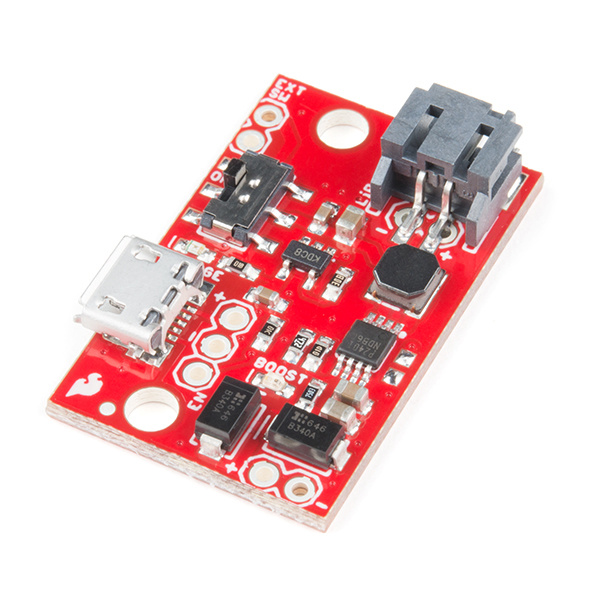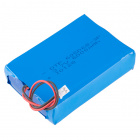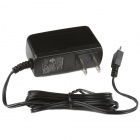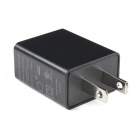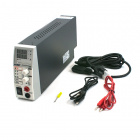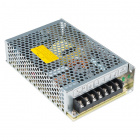SparkFun 5V/1A LiPo Charger/Booster Hookup Guide
Introduction
The SparkFun 5V/1A LiPo Charger/Booster is a no nonsense circuit for generating an amp from a lipo, at 5 volts. It's low cost, has a simple booster circuit realizing the PAM2401 IC, and includes protection diodes so you can run multiple cells in series for extra kick. When a booster circuit is in operation, it draws more current than the lower the input voltage, so it's possible to violate the C rating of the battery. This circuit doesn't care, nor do I. If you're looking to coddle your LiPos, try the excellent Battery Babysitter. But if you need charge delivered somewhere NOW, this is the product for you.
This guide shows how to use 1x charger/booster with 1x lipo to make a pack, and how to connect several packs together for greater current or voltage.
Required Materials
A Battery
You'll need a battery for each charger/booster you have. While really any LiPo will work, smaller batteries are easy to overload and don't supply much charge. It is recommended to use 1Ah batteries and larger, with the form factor most suited to our 1Ah cell.
Lithium Ion Battery - 1Ah
PRT-13813A Load
Any development board that runs from a USB supply is a great thing to power with the charger/booster. It provides a stable 5 volts, and can feed power hungry boards. Take a look in the microcontrollers product category, anything with a 5V input may need mobile power.
A Charger
Any old micro-B charger should do the trick, the circuit will consume up to 500mA so a computer's USB port is not recommended. You can even use the power pins to charge from a generic bench supply.
Here's some sources that can be used to connect to the on board micro-B USB connector:
With the addition of a micro-B cable, the following USB supplies will work:
USB Wall Charger - 5V, 1A (White)
TOL-14042Or if you're in the market for a larger generic supply, try these:
Power Supply - 80W DC Switching Mode
TOL-09291Required Tools
You'll have to attach your load somehow! Make sure you've got a few tools on hand.
Suggested Reading
If you aren't familiar with the following concepts, we recommend checking out these tutorials before continuing.
